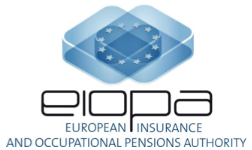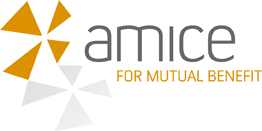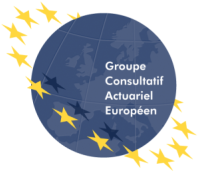reporting guidelines and templates published by EIOPA on 9 July 2012 bring the industry a step closer to understanding their Solvency II reporting obligations. The further clarifications and the raising of certain thresholds to address proportionality concerns are welcome, but firms in some smaller markets will be laden with unfair reporting burdens. The updated documents are part of EIOPA’s response to the November 2011 public consultations on the reporting templates (Final Report on CP09 and CP11). EIOPA said it “strongly believes” the industry should view the documents as a basis to start the implementation phase. This, despite the likelihood that some templates will be modified based on the outcome of the Omnibus II trialogue negotiations.
Changes to reporting package
The reporting package now includes six updated Excel files split into Solo and Group entities (see table). A further separation has been made between public disclosure (including the SFCR) and regulatory disclosure (including RSR). [table id=11 /] Significant changes were made to some of the templates*.
Significant changes were made to some of the templates*.
- Threshold for quarterly reporting of additional financial stability information raised from €6 billion to €12 billion in assets, at Solvency II balance sheet (pages 13 & 25).
- Quarterly reporting only of templates Assets-D1 (Investments Data), Assets-D20 and Assets D2T (Derivatives Data). But all undertakings must report them in the fourth quarter (page 14).
- No change to CIC tables (page 15).
- The threshold for providing quarterly information on ‘look-through’, template Assets D4 (Investment Funds) raised from 20% to 30% of portfolio invested in investment funds (page 16 & 19).
- Variation Analysis templates information to be provided on an actuarial rather than a cash flow basis (page 18).
- Counterparty default risk SCR template changed, reflecting the rationale of the calculation (page 18).
- “Salvages and subrogation” triangles for non-life technical provisions removed (page 19 & 23).
- Simplification of reinsurance templates Re-J1 (Facultative covers non-life & life) and Re-J2 (Outgoing Reinsurance Programme in the next reporting year) (page 20).
- Public disclosure information on risk concentration for groups removed (page 21).
50% threshold trap
One of the significant changes in the requirements has been to raise the threshold for quarterly reporting of financial stability information from €6 billion to €12 billion in assets, at Solvency II balance sheet. EIOPA estimates this will reduce the number of reporting entities by about 30%. A spokesperson told Solvency II Wire that the threshold was raised, “In order to take industry concern into account and in line with the principle of proportionality.” It is not clear which countries or how many firms will be affected by this additional requirement. EIOPA said it did not estimate the figures as it would be up to the national authorities to ensure the market share. “Most markets where the 50% market requirement is likely to have effect are already covered to a certain extent by foreign groups already reporting. The number of undertakings which would have to report in order to ‘top-up’ the market share to 50% is thus likely to be limited.”
It is not clear which countries or how many firms will be affected by this additional requirement. EIOPA said it did not estimate the figures as it would be up to the national authorities to ensure the market share. “Most markets where the 50% market requirement is likely to have effect are already covered to a certain extent by foreign groups already reporting. The number of undertakings which would have to report in order to ‘top-up’ the market share to 50% is thus likely to be limited.”
Unfair burden on smaller firms
One market likely to be affected by the 50% threshold is Slovakia, where the overall asset volume for all insurance companies is about €6.8 billion, according to figures from the National Bank of Slovakia (December 2011). This would mean that although no single firm will meet the €12 billion threshold, several will have to comply with the quarterly reporting requirement. Miroslav Camek, Policy Advisor of Life Insurance at the Slovak Insurance Association told Solvency II Wire that it was widely understood that most of its members (22 firms representing about 98% of the industry) will have to provide the quarterly reporting. “The NBS will certainly need the closer look into the financial health of our insurance companies and therefore quarterly reports will be required to monitor as much of the insurance market as possible,” he said.
Mr Camek expressed concern that the requirement could eventually establish an uneven playing field between insurance companies of similar size in Europe. “This could be another reason for insurance companies operating in Slovakia to transform into branches with reporting obligations to the parent company. Solvency II is forcing such restructuring and capital outflow back to the centre. Our hope is that this was not one of the principal intentions of the Directive.”
Other countries where firms may be facing similar challenges include Cyprus where there are no insurance firms with more than €12 billion in assets.
Miroslav Camek, Policy Advisor of Life Insurance at the Slovak Insurance Association told Solvency II Wire that it was widely understood that most of its members (22 firms representing about 98% of the industry) will have to provide the quarterly reporting. “The NBS will certainly need the closer look into the financial health of our insurance companies and therefore quarterly reports will be required to monitor as much of the insurance market as possible,” he said.
Mr Camek expressed concern that the requirement could eventually establish an uneven playing field between insurance companies of similar size in Europe. “This could be another reason for insurance companies operating in Slovakia to transform into branches with reporting obligations to the parent company. Solvency II is forcing such restructuring and capital outflow back to the centre. Our hope is that this was not one of the principal intentions of the Directive.”
Other countries where firms may be facing similar challenges include Cyprus where there are no insurance firms with more than €12 billion in assets.
 The potential unfair impact on smaller firms is echoed by others. Gregor Pozniak, Secretary General, AMICE, said, “This could lead to a situation where two firms of equal size operating in two countries are subject to very different reporting burdens. Given that the fixed cost of setting up reporting systems is likely to hit smaller firms harder, this could be a real concern for some of our members.”
The potential unfair impact on smaller firms is echoed by others. Gregor Pozniak, Secretary General, AMICE, said, “This could lead to a situation where two firms of equal size operating in two countries are subject to very different reporting burdens. Given that the fixed cost of setting up reporting systems is likely to hit smaller firms harder, this could be a real concern for some of our members.”
A corridor for borderline firms
Clarity was also provided for firms whose total assets border on the €12 billion threshold. To keep the sample composition stable, firms that fall within a range of €1 billion above the threshold will only be included in the sample if they exceed the threshold for more than two consecutive years. Firms that exceed the threshold beyond €1 billion will be permanently included in the sample with immediate effect (with six months advance notice to prepare). Similar criteria will apply to firms that miss the €12 billion threshold.Reporting for assets
Another welcome change in the reporting requirements is that the templates Assets-D1, Assets-D2O and Assets-D2T will now only be required on a quarterly basis. However all undertakings, irrespective of size, will have to report these templates at the end of the fourth quarter within the quarterly deadlines. EIOPA notes that the templates, “Would only need to be re-submitted within the annual deadlines if material valuation changes occur after the due date for the fourth quarter reporting.” For look-through information (Assets-D4) the reporting threshold has been raised to apply only to undertakings that hold more than 30% of their portfolio in investment funds (previously this was set at 20%). EIOPA notes that only partial look-through will be required, and that it will be restricted to information regarding the asset category, geographical exposure and currency exposure. Broadly speaking the asset management industry has welcomed the additional clarity and EIOPA’s call to begin engaging with the templates. Susan Wright, Regulatory Adviser at the Investment Management Association (IMA), encouraged insurers and asset mangers to work together in the implementation process. “The publication of the EIOPA guidelines is timely,” she said. “We believe firms should move on from a high level discussion and begin to engage with the details of individual templates. Insurers must work with their asset managers on filling in the individual fields and identifying where each piece of information will come from. It is also important to review if existing contracts will be affected by the data requirements.”
The IMA has been working with the ABI and the TPA Working Group (Third Party Administrators), encouraging dialogue between asset managers and insurers in order to address any outstanding issues. “We encourage our members to follow the FSA’s advice and start engaging with the process despite any potential changes to the templates,” Ms Wright said.
Broadly speaking the asset management industry has welcomed the additional clarity and EIOPA’s call to begin engaging with the templates. Susan Wright, Regulatory Adviser at the Investment Management Association (IMA), encouraged insurers and asset mangers to work together in the implementation process. “The publication of the EIOPA guidelines is timely,” she said. “We believe firms should move on from a high level discussion and begin to engage with the details of individual templates. Insurers must work with their asset managers on filling in the individual fields and identifying where each piece of information will come from. It is also important to review if existing contracts will be affected by the data requirements.”
The IMA has been working with the ABI and the TPA Working Group (Third Party Administrators), encouraging dialogue between asset managers and insurers in order to address any outstanding issues. “We encourage our members to follow the FSA’s advice and start engaging with the process despite any potential changes to the templates,” Ms Wright said.
 Seamus Creedon, Solvency II Project Manager, Groupe Consultatif, said the updated guidelines were a move in the right direction but raised questions about the levels of detail asked of firms. “We welcome such steps as EIOPA has felt able to take to reduce unnecessary burdens on undertakings by raising thresholds and simplifying certain requirements. We do however still have significant reservations about the value to supervisors of detailed asset reporting and of look-through approaches.”
Seamus Creedon, Solvency II Project Manager, Groupe Consultatif, said the updated guidelines were a move in the right direction but raised questions about the levels of detail asked of firms. “We welcome such steps as EIOPA has felt able to take to reduce unnecessary burdens on undertakings by raising thresholds and simplifying certain requirements. We do however still have significant reservations about the value to supervisors of detailed asset reporting and of look-through approaches.”
Impact of Omnibus II
As ever, Omnibus II casts its shadow on the reporting requirements as well. EIOPA notes that further changes to the templates will depend on the outcome of trialogue negotiation. In the accompanying press release it stated, “EIOPA underlines that the ongoing discussions related to the Omnibus II Directive (OMD II) and the future Implementing Measures are expected to lead to changes in the reporting requirements. The design or structure of the templates may also be affected by the development of the respective IT reporting standards.” The latter refers to finalisation of the XBRL taxonomy, which EIOPA says may be altered during the implementation stage. The press release also stated, “Despite possible changes EIOPA strongly believes that the industry should use this package already now in order to start the implementation phase.” Areas that may be affected by the final Omnibus II text include:- Scope of quarterly reporting;
- Own Funds;
- SCR specific risk modules;
- Life Technical Provisions;
- Activity by country; and
- Templates applicable to ring-fenced funds.







2 thoughts on “Updated Solvency II reporting guidelines”
Comments are closed.